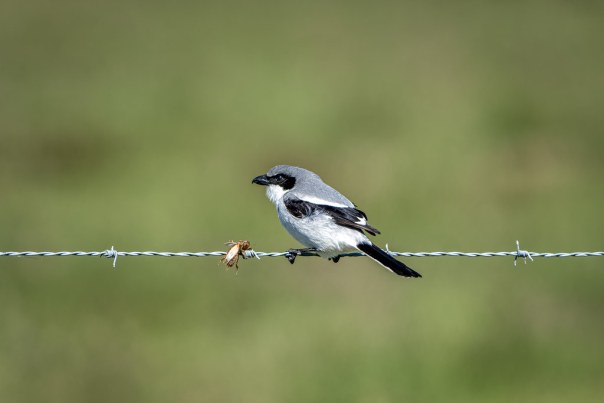Anyone can snap a photo. As photographers, we choose subjects and then compose frames around them so a viewer’s eyes are drawn to what we want them to see. One thing to think about when we’re out with our cameras is how to isolate the subjects in our images.
Scan the scene when shooting – look for distracting elements and get rid of them. How? Sometimes you can’t, but here are some suggestions.
Viewpoint: Shift a few feet one way or another to hide things. There’s a much less attractive mailbox just out of the frame below on the left.
 A Mailbox on Joe Overstreet Road
A Mailbox on Joe Overstreet Road
Magnification: We never have enough zoom, do we? Use what you do have to get close and separate subjects from clutter. You can also crop later on the computer, but you’ll risk losing some image quality / resolution.
 A good morning for a song – singing Eastern Meadowlark. Joe Overstreet Road
A good morning for a song – singing Eastern Meadowlark. Joe Overstreet Road
Light: Sometimes the light is just right to make your subject stand out from the background – take advantage of it! This can be modified a bit in post processing too.
 Shy bird – A Roseate Spoonbill in the light. Black Point Wildlife Drive
Shy bird – A Roseate Spoonbill in the light. Black Point Wildlife Drive
Depth of Field (DOF): In addition to getting as close as you can and using a long focal length, shooting with a wide open aperture creates a shallower DOF and blurs the background behind your subject. You may need to shift your position a bit to insure that the entire subject (e.g. both the insect and the bird) are in the plane of focus.
 Butcher Bird – Loggerhead Shrikes often kill prey by impaling them on a thorn or barbed wire. Joe Overstreet Road
Butcher Bird – Loggerhead Shrikes often kill prey by impaling them on a thorn or barbed wire. Joe Overstreet Road
Color: Catching your subject against a contrasting color can help it stand out. These American White Pelicans with their yellow beaks were very nice to pose for me in the blue water.

American White Pelicans. Black Point Wildlife Drive
So that’s a few ideas. If you think about this when you’re out, your photos will improve. Do you have any other suggestions? Feel free to add them in the comments.
And speaking of isolation, Lynn and I are both generally in good health (thankfully!). But the CDC says we’re at higher risk from the COVID-19 virus due to our ages. We’re going to follow their recommendations and stay up to date on developments.
Thanks for stopping by and reading my blog. Now – go out, stay safe – and make some photos!
©2020, Ed Rosack. All rights reserved


























































